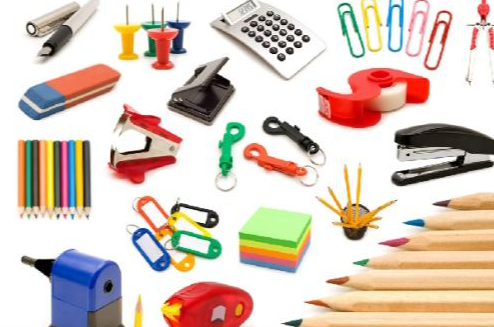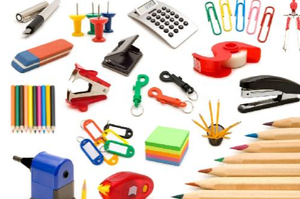
Standard and process for checking stationery products and factory inspection services
Stationery, as an essential tool for students' daily learning, its quality and safety directly affect the health and learning experience of users. During the inspection, factory verification, and product inspection and certification processes of stationery, a strict quality control system must be established. This article will systematically elaborate on the inspection standards, testing methods, and quality certification requirements for stationery products, providing professional guidance for relevant practitioners.
I. Inspection and Certification System for Writing Tools
(1) Certification Standards for Writing Products
Writing Performance Certification
Fluency test: The writing is smooth and there is no ink leakage.
Identification verification: The trademark, specifications, and color are all consistent with the sample.
Operational stability: Repeatability of multiple rotation/pressing tests to evaluate the reliability of the mechanism
Structural Integrity Certification
Part consistency: All parts are exactly the same as the sample.
Sealing performance: There is no leakage at the ultrasonic welding joint.
Durability test: Long-term writing test to evaluate ink uniformity
Safety performance certification
Material safety: The pen barrel material complies with environmental protection requirements.
Chemical safety: The ink is non-toxic and harmless, and has passed the heavy metal test.
Structural safety: No sharp edges, no risk of small parts falling off
(2) Leakage Detection Certification
Initial Condition Inspection
Packaging inspection: Check the initial state of the pen when opening the box
Sealing assessment: Verification of the integrity of liquid sealing interfaces
Trace detection: Check for oil leakage after rotating and shaking.
Writing test certification
Short-term test: Each sample pen is used for short-term writing.
Long-term test: Perform prolonged writing at the specified quantity.
Quality assessment: Inspection of ink ball formation and ink uniformity
II. Inspection and Certification for Book Binding Products
(1) Appearance Quality Certification
Visual Consistency Certification
Color matching: Consistent with the colors on the color card and the sample.
Material verification: The materials used comply with the specified requirements.
Pattern verification: The printed pattern is clear and error-free.
Size compatibility certification
Specification verification: Dimensions are consistent with the data.
Actual test: Conduct trial installation and inspection using the matching books.
Compatibility: Adapted to the size specifications of foreign books
(2) Process Quality Certification
Sewing Process Certification
Sewing thread quality: No jumping stitches or broken threads.
Edge treatment: No loose edges or frayed areas.
Strong structure: The sewing parts are sturdy and durable.
Appearance defect inspection
Surface quality: Free of stains and scratches
Printing quality: The patterns are clear and there is no color difference.
Functionality: No defects that affect usage
III. Inspection and Certification for Notebook Products
(1) Content Completeness Certification
Number of Pages and Specifications Certification
Quantity verification: Special sampling to verify the actual number of pages
Specification verification: Dimensions and number of lines meet the requirements.
Stripes color: The color of the herringbone stripes is accurate.
Printing quality certification
Cover printing: Clear trademarks, barcodes and text.
Page quality: The paper weight meets the standard.
Binding process: The binding is firm and there is no page separation.
(2) Material Safety Certification
Paper Quality Certification
Weight standard: Meets the specified weight requirements
White balance control: Avoid excessive bleaching and protect eyesight
Environmental certification: Printed with eco-friendly ink
Binding material certification
Glue safety: Non-toxic and harmless adhesive
Metal parts: Free from rust and sharp edges
Plastic components: Conform to the limit of phthalates
IV. Certification System for Inspection Items
(1) Packaging Inspection Certification
Quantity Accuracy Certification
Packing quantity: Place items into boxes according to the specified quantity.
Mixed cargo inspection: No mixed versions or underloading occurred.
Safety measures: The protective paper and padding are properly in place.
Identification integrity verification
Certificate of Conformity: Contains complete product information
Production date: Clearly indicate the production time
Expiry Date: Indicates the valid usage period
(2) Appearance Quality Certification
Visual Inspection Certification
Printing quality: The font and pattern are clear and accurate.
Surface integrity: Free from damage, stains, and rust marks
Safety: No non-functional sharp points or edges
Material Consistency Certification
Color accuracy: Consistent with the standard sample
Material correctness: Use the specified materials
Process level: Meets quality requirements
V. Structural Performance Certification System
(1) Structural Stability Certification
Assembly Quality Certification
Connection parts: Rivets and hinges are firmly and reliably connected.
Moving parts: No loosening or detachment occurred.
Overall structure: Well assembled, no deformation
Dimension accuracy certification
Specifications comply: The dimensions and model meet the requirements.
Tolerance control: within the general tolerance range
Testing usage: Meeting actual usage requirements
(2) Functional Certification
Performance testing is employed
Writing tools: No breakage, uniform thread pattern
Correction tool: Effective erasure, no residue left
Binding tools: Function is normal, operation is smooth.
Durability test
Opening and closing test: The pencil case and folder are repeatedly opened and closed.
Load-bearing test: The folder holds the files without them falling off.
Life test: Evaluation of the service life of key components
VI. Safety Performance Certification System
(1) Physical Security Certification
Drop Test Certification
Test height: 36-inch standard drop test
Drop direction: Five different directions tested
Result assessment: No structural damage
Edge security authentication
Sharp edge detection: No sharp edges
Sharp point inspection: No dangerous sharp points.
Small parts: No risk of swallowing
(2) Chemical Safety Certification
Material Composition Certification
Heavy metal test: The contents of lead, cadmium, mercury, etc. are in compliance with the standards.
Plasticizer: The limit of phthalate esters is in compliance with the requirements.
Volatile substances: Benzene compounds do not exceed the limit.
Printing security certification
Ink safety: Use eco-friendly ink
Adhesion: The printed patterns do not easily come off.
Friction resistance: Oil leakage test passed
VII. Inspection and Certification Process Management
(1) Sampling Inspection Certification
Sampling Scheme Certification
Sampling standard: Follow the AQL standard.
Sample size: Representative
Inspection levels: Inspection is conducted in three separate categories: appearance, functionality, and safety.
Environmental inspection certification
Lighting conditions: Standard light source environment
Testing tools: Specialized testing equipment
Personnel qualifications: Professional training and certification
(2) Record Management Certification
Data Verification Certification
Test Record: Complete Test Data
Problem description: Accurate quality issue record
Evidence preservation: Photos, samples, and other evidence materials
Report standard certification
Standard inspection report format
The conclusion is clear: a definite qualification determination.
Review process: Multi-level review confirmation
VIII. Continuous Improvement of the Certification System
(1) Supplier Management Certification
Qualification Review Certification
Production license: Legal production qualification
Quality system: A comprehensive quality management system
Environmental certification: Obtained relevant environmental certification
Process Control Certification
Incoming material inspection: Rigorous inspection of raw materials
Process inspection: Quality control in the production process
Factory inspection: Comprehensive inspection of the finished products
(2) Quality Traceability Certification
Traceability System Certification
Batch management: Comprehensive batch traceability
Material traceability: The source of raw materials can be traced.
Process Record: Complete Production Record
By establishing a complete quality inspection and certification system for stationery products and strictly implementing quality control throughout the entire process from raw materials to finished products, it is possible to effectively ensure the safety and quality of stationery products, providing students with safe and high-quality learning tools, and promoting the standardized development of the stationery industry.
分享这个商品

Standard and process for checking stationery products and factory insp
Stationery, as an essential tool for students' daily study, its quality and safety directly affect the health and learning experience of the users.
